A mountain welcome
May 31, 2012
Few wilderness areas are as easy to visit as the Santa Monica Mountains—or as challenging for the average visitor to understand.
Sprawled over 153,000 acres and stretched along 44 miles of coastline, the Santa Monica Mountains National Recreation Area is part federal, part state and part local. Its ownership is an alphabet soup of government agencies and nonprofits; its internal boundaries are a public-private jigsaw puzzle.
Just figuring out which trails permit dogs can be a project. Yet the closest thing it has had to a visitor’s center has been a far-off office in a Thousand Oaks municipal complex.
Now, after years of planning and study, the nation’s largest urban national park finally has built a true, central gateway where the public can stop for information about its trails, beaches, amenities and wildlife.
On June 9, the Anthony C. Beilenson Interagency Visitor Center will open to the public in the heart of the recreation area, on the grounds of the former King Gillette Ranch near Calabasas.
“This is fantastic,” said Lisa Soghor, deputy executive officer for the Mountains Recreation and Conservation Authority, which manages the ranch and co-hosted a press tour this week in advance of the grand opening. “To have it here, at the heart of the mountains, in the center of the recreation area, is just really a dream come true.”
Los Angeles County Supervisor Zev Yaroslavsky agreed.
“The King Gillette property is one of the most beautiful in the Santa Monica Mountains,” said Yaroslavsky, whose 3rdDistrict includes the recreation area. “It’s centrally located in the national and state park, making it a great location for the Visitors Center. And it’s rightly named after former Congressman Anthony Beilenson, who had so much to do with the preservation of the Santa Monica Mountains.”
The new center, near the intersection of Las Virgenes Road and the Old Mulholland Highway, will also reflect the colorful history of one of Southern California’s most storied ranches. The Spanish-style building, erected in 1928, is the former horse stable of a 588-acre estate developed by King Camp Gillette, the razor-blade baron, and designed by famed Los Angeles architect Wallace Neff.
After Gillette’s death, the ranch—which he described as “paradise on earth, California style”—had a cavalcade of quintessentially Californian owners. MGM director Clarence Brown, partied and filmed on it from 1935 until the 1950s. Then it was sold to the Claretian Order of the Catholic Church, which used it as a seminary until the mid-1970s.
As urban development encroached on the mountains, neighboring homeowners lobbied the state to buy and preserve it. But in 1978, the land was sold to the Church Universal and Triumphant, a New Age doomsday sect that renamed it “Camelot” and moved its headquarters into the verdant, mountain-ringed valley.
That incarnation lasted until the mid-1980s, when the church moved to a remote plot in Montana, where members began preparing for Armageddon. (“You have 10 million auras in Los Angelesand here you have wide open space,” the church leader, Elizabeth Clare Prophet, explained.)
In 1986, Soka University of America, a liberal arts college financed by a Japan-based lay Buddhist organization, bought the ranch and announced plans to build a campus. But by now, local homeowners and environmental groups were organized enough to block the development. The appeals and lawsuits lasted until 2005, when an unprecedented coalition of government agencies, including Los Angeles County, raised $34 million to buy the land and turn it into the recreation area’s gateway.
“As with many important parkland acquisitions, it took more years and more battles than we had anticipated—but it also consolidated the resolve of state, federal and local park agencies to make this happen,” said Joe Edmiston, executive director of the Santa Monica Mountains Conservancy.
Until now, the ranch has been mainly been known as the site of the reality TV show, “The Biggest Loser,” which leases the estate’s property. This week, however, the new Visitor Center stepped into the spotlight, with rooms full of colorful displays and exhibits and a top-of-the-line LEED Platinum certification for environmental sustainability.
“We are proud to say that this is the first ‘net zero’ Visitor Center in the National Park System,” National Park Service Acting Superintendent Lorenza Fong noted, adding that the center will produce all of its own energy through a photovoltaic solar energy system. The historic building was remodeled and preserved with $9.5 million in federal stimulus grants.
Named for the congressman who introduced the 1978 legislation creating the recreation area, the center will be jointly staffed and managed by the recreation area’s major operators: the National Park Service, the California State Parks, MRCA and the Conservancy.
At the press tour, rangers proudly showed off the front desk made from recycled materials and a “virtual postcard” booth that allows visitors to photograph themselves against a background of the recreation area’s breathtaking scenery.
Most impressive, however, was an interactive display that cuts through the confusion over which rules apply in which sections of the recreation area’s vast network of parklands. It’s a useful tool, because, even on the trails around the Visitors Center, they change. Because the National Park Service allows dogs and the State Parks don’t, for instance, only the immediate grounds of the center allow pets on leashes; cross a bridge onto the parts of the recreation area owned by the state or MRCA, and dogs are forbidden.
“It’s still an issue,” laughed NPS Supervisory Park Ranger Barbara Applebaum, education supervisor for the center. But with a touch of the screen, she was able to highlight a host of places within the recreation area that were perfect for every variety of visitor—families, bicyclists, wildflower enthusiasts, serious hikers, swimmers and even canines.
The Visitor Center is at 26876 Mulholland Highway, Calabasas, and free to the public. The Grand Opening, with food trucks, live music and activities for all ages, will be June 9 from 10 a.m. to 4 p.m. For more information, call 805-370-2301 or visit www.nps.gov/samo. For directions and a flier, click here.

Posted 5/31/12
Get ready to ramp up on Wilshire
May 11, 2012
We got through Carmageddon last summer. Now it’s time to navigate Ramp Jam.
Long-running closures of the 405 Freeway’s Wilshire Boulevard ramps are set to begin on Friday, June 22, bringing fresh challenges to an intersection that’s already among the nation’s worst.
Anxious residents and employees in the area have been girding for the start of the ramp work for months. Some online wags have dubbed it The Rampture, while others who live nearby refer to it ominously as “the next shoe to drop.”
Whatever you call it, the work is needed to construct sweeping, 30-foot-high flyover ramps that will improve traffic flow and safety at the perennially jammed intersection, as this Metro video explains. Currently, vehicles moving on and off the freeway must execute a complicated merge with heavy traffic on Wilshire—a situation the new flyover ramps are intended to alleviate.
The first of eight ramps to close will be the westbound Wilshire on-ramp to the northbound 405 and the northbound 405 off-ramp to westbound Wilshire. Both will be out of commission for 90 days starting June 22. Work on the other ramps will proceed in segments after that, with planned closures ranging from 90 days to 14 days. Delays and detours are expected as workers demolish and rebuild the ramps, working around the clock to finish the job.
In all, work on the Wilshire ramps is expected to take about a year.
Supervisor Zev Yaroslavsky is set to appear with other officials at a news conference today, Friday, May 11, to present ways of coping with the extended closures.
The official mantra for getting through it all: Plan ahead. Adjust your travel times. Share the ride.
In other words, get ready for a long, blocked summer—and then some.
The June 22 start date was chosen, in part, because it will come after the end of the academic year for LAUSD and private schools in the area. The work also will be getting underway following the mid-June flurry of commencement activity at UCLA.
Meanwhile, Metro’s Commute Services Department is seizing the moment and hoping to help residents, workers and employers navigate the disruption, and, perhaps, discover some new ways of getting around that will outlast the temporary pain during construction.
Then, later in the summer, Carmageddon will make a return appearance. The weekend shutdown of the entire freeway is the flipside to last summer’s successful, shorter-than-expected closure required to demolish one side of the Mulholland Bridge. This summer, workers will tear down the other side of the bridge during Carmageddon II. A date for the sequel has not yet been announced.
When completed in 2013, the 405 Project is expected to expand and modernize the heavily-travelled stretch of freeway that runs through the Sepulveda Pass, from the 10 Freeway to the 101 Freeway. The $1.034 billion project will add a 10-mile northbound carpool lane along with lane and ramp improvements and three rebuilt, seismically reinforced bridges across the freeway.
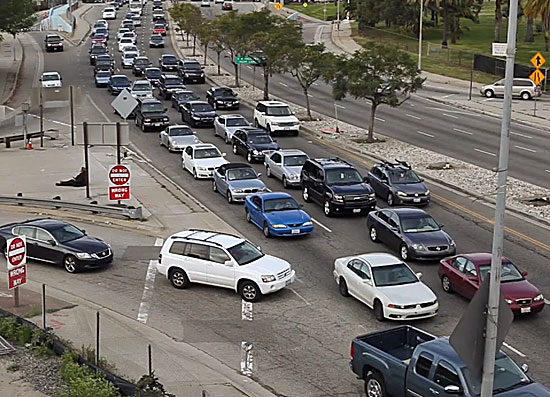
Where giants collide: some of the heaviest traffic in the nation occurs where Wilshire and the 405 meet.
Posted 5/11/12
Meeting to get the 411 on the 405
March 13, 2012
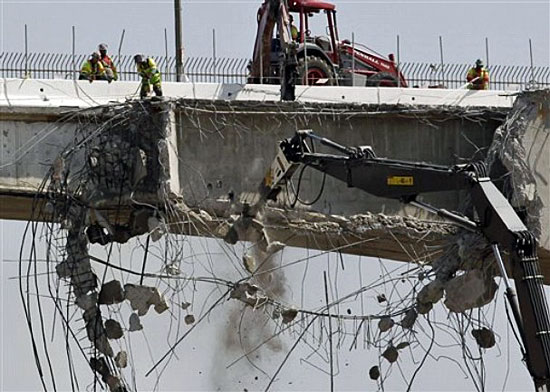
Stay up to speed on the 405 Project at an upcoming community meeting. Above: Mulholland Bridge comes down.
It’s a busy time on the I-405 Sepulveda Pass Improvements Project, with lots going on at many locations. Here’s a chance to find out the latest. On Thursday, March 22, Metro staff will discuss the project’s progress and provide information about upcoming construction activities at the first of five community meetings.
You can find out what’s happening with the Sunset Boulevard,Mulholland Drive and Skirball Center Drive bridges. Information about the upcoming Wilshire Boulevard ramp closures—including detours, signage and schedules—also will be provided. And you can find out more about the December, 2011 collapse of a so-called “mechanically supporting engineering” retaining wall, and learn why all such walls on the project are being rebuilt. A question-and-answer session will follow the 45-minute presentation.
The March 22 meeting will be held from 6 p.m. to 8 p.m. at the Westwood Recreation Center, 1350 South Sepulveda Boulevard. More upcoming meetings are scheduled for May 24, July 26, September 27 and November 15 at locations to be determined. Visit Metro’s I-405 project webpage for more details, including upcoming detours and lane closures.
When it’s completed, the I-405 project will expand capacity on one of the most heavily traveled, congested freeways in the country by adding an HOV lane, widening existing ramps and bridges, and improving the supporting infrastructure. It’s expected to be finished in 2013.
Posted 3/13/12
More overnight freeway closures
March 8, 2012
Workers building temporary supports under the Mulholland Bridge will be closing the 405 Freeway for additional nights.
All lanes of the southbound freeway will be closing tonight, March 8, and again on March 12 and 13, from the 101 Freeway to Getty Center Drive. Then all northbound lanes from Getty Center Drive to the 101 will be closing on March 14 and 15.
Each night, ramps will begin closing at 7 p.m. and freeway lanes at 10 p.m. The full closure in each direction will run from midnight to 5 a.m. Details are here.
A Metro video of a temporary supporting column being placed under the bridge, including a fast-paced time lapse sequence, can be viewed here.
Posted 3/8/12
End of the road for beloved bookmobile
March 7, 2012
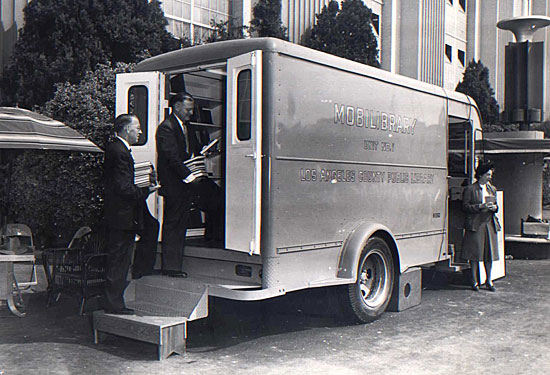
L.A. County's first bookmobile at the 1948 County Fair, with 3rd District Supervisor John Anson Ford (left) and County Librarian John Henderson.
When one chapter opens, another closes. This week, as Topanga breaks in a new, state-of-the-art library, the county will bid farewell to another cherished institution—the Las Virgenes bookmobile.
Twenty-eight feet long and stacked to the rafters, the traveling library has rumbled through the Santa Monica Mountains for generations, serving canyon- and hill-dwellers from Malibu to the Mulholland Highway.
“A lot of people will mourn the loss,” predicts former community library manager Donna Serra, who retired in 2010 after more than a decade as the Las Virgenes “bookmobile lady.”
“People from all walks of life have used that bookmobile. Families, academics, homeless people. People would come and bring their dogs inside with them. When we’d go to Topanga, so many people would come that we’d have to put up a sign saying only so many people could be inside the bookmobile at one time. They even used to put us in their parades.”
On Friday, when the bookmobile finishes its last stop—from 1:30 p.m. to 3: 30 p.m. at Hidden Hills City Hall—its route will be eliminated, leaving only four bookmobiles in the Los Angeles County system. County Librarian Margaret Donnellan Todd says it’s a casualty of time and success.
The vehicle itself is nearing the end of its life span, she says, and the library system has managed in recent years to shore up many of the brick-and-mortar facilities near the mountains.
“We now have the Malibu library, which will reopen in April after a full renovation,” Todd says. “Then there are the libraries in Westlake Village and Agoura Hills, which are both fairly new. The City of Calabasashas a new library, and now there’s the new Topanga library, of course.”
Bookmobiles first caught on in the United States around 1900, when a librarian in rural Maryland used horse-drawn wagons to expand local library service. After World War II, Congress began subsidizing them as a way to bring literacy to rural America. At their peak, some 2,000 were in use nationally. A bookmobile nicknamed “Little Toot” served children in the City of Los Angeles through the 1950s; by the 1960s, there were eight bookmobiles in the Los Angeles County fleet alone.
Since then, though, bookmobile use had gradually dwindled, largely due to rising gas prices, suburban development and the Internet. In 2008, according to the National Library Assn., only about 930 remained on the road nationally, including 69 in California.
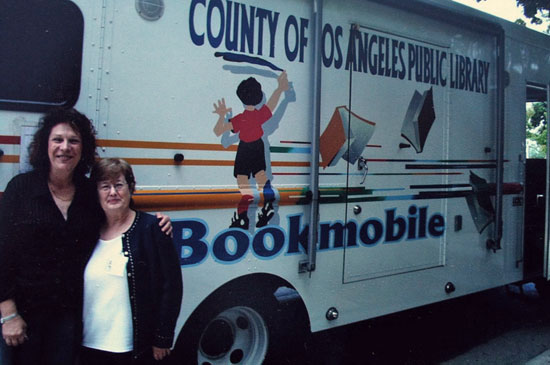
The Las Virgenes "bookmobile lady," Donna Sera, left, seen here several years ago with Raya Sagi, formerly of the Agoura Hills Library.
Libraries have been reluctant to get rid of them entirely, and the National Library Assn. still celebrates National Bookmobile Day. In 2009, Los Angeles County added a bookmobile route in the rural Antelope Valley, where three of its vehicles are now assigned, and its fourth—an urban outreach bookmobilethat mostly serves senior communities and housing projects—is among the most popular in the county.
But most parts of Los Angeles now have branch libraries within easy driving distance, Todd says, and most bookmobiles lack the breadth and digital access that brick-and-mortar libraries now offer. The Las Virgenes bookmobile only carried about 2,500 books, CDs, DVDs and other lendable items, while the new library in Topanga alone stocks tens of thousands.
Serra, the retired librarian, says the bookmobile’s limitations were part of what patrons loved about it. In fact, she says, when the traveling library began electronically tracking overdue books, many patrons pined aloud for the days “when you could just sign your name on a card and that was enough.”
Readers may not have had as much to choose from, says Serra, but she made up for that in personal service. Sometimes, she says, she and bookmobile aide William Moore would drop a bag of books at the home of a sick patron, or use their own cars when the bookmobile was broken down or stopped by inclement weather.
Each week, she says, she and her fellow staffers would load up the lumbering vehicle with items they had personally chosen for patrons.
“There was Uncle Dale, a photographer in the movie business who had a lovely little daughter, Fiona,” recalls Serra. “We’d find special things for her, things with princesses and fairies, but also classics like “The Three Musketeers.” And there were the Portmans, another great family—voracious readers. Mrs. Portman would come in and we’d have 50 books set aside, waiting for her.”
Over the years, Serra says, she came to know the minds of thousands of patrons, from celebrities who would wander up the bookmobile stairs incognito to homeless bookworms from Malibu Creek.
One soul, a courteous transient named Daniel, came in regularly for two years to renew “The Complete Writings of Thomas Paine,” she remembers. Another patron made such delicious homemade tomato relish that the staff stocked her favorite authors—J.D. Robb, Iris Johansen—just to ply her for the recipe.
Pets were welcomed, she says, and one of her favorite Topangans perused the stacks for years with a Tennessee squirrel hound named Lily, looking for volumes on spirituality. When the woman died in 2008, Serra went to the memorial service.
“For my birthday one year, she gave me an ancient Sanskrit poem written in calligraphy, about looking forward to each day and living to the fullest,” says Serra. “I still have it here in my house with me.”
Serra predicts it will take time for her former patrons to get used to a library that isn’t on wheels: “They’re a unique group, people who use bookmobiles.”
But Todd, the county librarian, says that the Las Virgenes bookmobile will have its own next chapter: After Friday, it will become either a backup bookmobile or be dispatched as an “express library” to sites undergoing renovation.
“It’ll have a nice part-time job—not a lot of stress, not a lot of mountain roads,” she says, laughing. “I suppose you could say that it will be enjoying its retirement years.”
Posted 2/22/12
Night closures of freeway, Wilshire planned (updated)
February 29, 2012
The Mulholland Bridge is at it again. The freeway-spanning overpass that brought you Carmageddon is being rebuilt after last summer’s demolition watched ‘round the world.
And that means some highly visible construction supports need to be installed starting Friday, temporarily changing the look of the bridge and requiring six nights of freeway closures (although only in one direction at a time.)
The iconic bridge with the imposing 237-foot-long central span was designed without center support columns. So, unlike the Sunset and Skirball bridges that also are being demolished and rebuilt for the project, the Mullholland Bridge requires some extra TLC, not just to tear down but also to build back up.
Workers in early February installed a temporary 64-foot-high central support structure (known in the trade as falsework) to shore up the bridge and allow for the reconstruction of the south side of the structure torn down during Carmaggedon.
More of the temporary falsework, in the form of six steel girder beams, each more than 100 feet long, will be installed starting Friday. Plywood will then be placed above the beams and used to form the roadway that will run across the bridge, which originally opened in 1960.
While all that’s going on overhead, the 405 Freeway will be closed from Getty Center Drive to the 101 Freeway so that the work can proceed safely.
The first overnight closures will affect the northbound freeway, and will take place on Friday and Saturday, March 2 and 3.
Then the same stretch will be closed in the southbound direction on the nights of Monday and Tuesday, March 5 and 6.
The work is expected to conclude with another two-night southbound closure, again on the stretch running from the 101 to Getty Center Drive, on Monday and Tuesday, March 12 and 13.
In each case, the drill is the same: some ramps will begin closing as early as 7 p.m. and some lanes will go out of commission beginning at 10 p.m. The full shutdown of freeway lanes will take place from midnight to 5 a.m.
(For updates on the closures and for detour information, check the project website or follow it on Facebook, Twitter or Nixle.)
Updated 3/2/12: Metro announced Friday that Wilshire Boulevard at Sepulveda also will be closing from 8 p.m. to 6 a.m. on a series of upcoming nights starting Monday, March 5. The closures are needed for some advance work on widening the portion of the 405 that crosses Wilshire. Details are here.
The work is all part of the massive, $1.03 billion project to construct a 10-mile northbound carpool lane on the 405, along with a series of modernizations and improvements, including “flyover ramps” at Wilshire Boulevard.
Some of the complexities of demolishing and rebuilding the Mulholland Bridge could have been avoided under a time- and money-saving plan that would have built an entirely new bridge before tearing down the old. But that idea, although popular with many on the project’s Community Advisory Council, was scuttled after some neighborhood groups filed objections.
The date for Carmageddon, The Sequel, in which the north side of the Mulholland Bridge will come down, requiring a shutdown of the entire freeway in both directions sometime this summer, has not yet been set.
Posted 2/29/12
Ramp delay, closure and more on 405
February 1, 2012
Activity’s buzzing all over the 405 Project these days, but work on one of the biggest—and potentially most traffic-confounding—near-term endeavors has been put off till May.
Work on the much-anticipated “flyover” ramps at Wilshire Boulevard, originally scheduled to start last year and then postponed until March, has been delayed again because of slower-than-expected progress in relocating a federal government utility line along Sepulveda Boulevard.
The westbound Wilshire on-ramp to the northbound 405 and the northbound 405 off-ramp to westbound Wilshire will need to be completely closed for 90 straight days so that workers can demolish and rebuild the ramps. The operation will later be repeated on six other ramps, with varying closure times anticipated. Kasey Shuda, acting community relations manager for the project, said the delay in getting started is not expected to affect the overall project timetable.
The prospect of long-running ramp closures at one of the busiest intersections in the nation has sparked concerns among those who live and work in the area. In the aftermath of Carmageddon, the upcoming work was dubbed “The Rampture” in the blogosphere, with many predicting far worse disruption than last July’s freeway shutdown because the ramps would be closed so long.
The organization FAST (Fixing Angelenos Stuck in Traffic) has suggested that offering free fares on Metro rapid bus line 761 would not only help alleviate jams but also could help turn some automobile drivers into bus commuters over the long term.
UCLA also has called on public transit agencies to offer reduced or free fares in the area while the ramp work is underway. In addition, the university is requesting extra traffic control officers along detour routes and other roadways likely to get heavy use during the closure.
Shuda said those ideas and others are now under discussion.
This week, meanwhile, brings the full closure of the northbound 405 between Getty Center Drive and the 101 Freeway for two consecutive nights so that the Mulholland Bridge can be shored up with a massive center supporting column. Details on the night closures taking place on Wednesday Feb. 1 and Thursday, Feb. 2, are here.
The column and other temporary supports will remain in place as the bridge’s south side is reconstructed. Then, sometime this summer, the north side of the bridge will be demolished in “Carmageddon II.” Specifics, including the date, have not yet been set.
For a closer look at what will be happening in all three of the project’s segments over the next 30 days, click here.
When completed in 2013, the project will add a 10-mile northbound carpool lane to the 405 along with other improvements.
Posted 2/1/12
Meet the 405 Project’s utility player
December 14, 2011
Bonnie Verdin knows where the wires are buried. Also the sewer pipes, cable conduits and gas lines.
And with the 405 Sepulveda Pass Project heading into its most intensive, multifaceted construction phase yet, she’s under pressure to get it all moved, as quickly and safely as possible.
As Metro’s “third party administration supervisor” on the project, Verdin is a real power player, in every sense of the word. She and her team are charged with making sure that the complex network of utilities running under Sepulveda Boulevard and other construction areas is relocated in ways that satisfy Caltrans regulations, city policies and staffing levels, neighborhood noise standards and the contractor’s need-it-yesterday timetable.
Talk about Mission Impossible.
“The heat is on my back because our contractor needs to get going,” she says as she gets ready to tackle one of the bigger upcoming challenges: moving a 6-inch gas line and an 8” crude oil line in West Los Angeles to clear the way for construction of new “flyover” ramps at Wilshire Boulevard.
Other massive and costly relocation jobs have been averted thanks to design changes as the project has progressed. That means, for example, that a 96-inch water line near the Getty will be staying put, thanks to a redesign that moved the construction far enough to the west to avoid the line.
Upcoming work on the Wilshire ramps and around the Getty are key as the project seeks to make up for lost time, some of it due to the scrapping of a plan that would have built a new Mulholland Bridge over the freeway before tearing down the old one. The reversal of that plan led to last summer’s “Carmageddon,” which Verdin watched from the comfort of her Whittier home.
While the rest of Southern California regarded the Mulholland Bridge demolition with trepidation because of the planned lengthy shutdown of the freeway, Verdin had another preoccupation: an 8-inch high-pressure gas line running through the bridge. With onsite crews monitoring the gas line, it came through the demolition unscathed. (The process will be repeated next year when the other side of the bridge is torn down.)
It’s not all about what lies beneath. Sometimes the job requires taking overhead power lines underground—an aesthetic bonus in the long run but potentially disruptive to the neighborhoods involved while the utility relocation work is going on.
Then there’s the responsibility of running interference among the 20-plus utility owners and agencies involved—from AT&T to Verizon, with everyone from Chevron to the Los Angeles Department of Water and Power in between.
“You can see the complexity and congestion,” she says with a bit of understatement. (For a look at just how complex, check out this Metro graphic of subterranean Sepulveda Boulevard.)
Even when everybody’s on board, she still has to help broker who gets first dibs on working on a given stretch of the project at a given time—something that’s cropped up when project contractor Kiewit Pacific Co. and the city Department of Water and Power both have crews ready to go with different missions to accomplish.
Verdin, 55, who previously was in charge of utility relocation for the Orange Line, has been with Metro for 21 years. In 2008, she started work on the 405 project, which will add a 10-mile northbound carpool lane along with an array of other improvements. The project is set to finish in 2013.
Her first move, as any household contractor knows, was to get it touch with DigAlert for a full picture of the subterranean utility landscape.
Then it was time to determine who was responsible for every piece of it. Establishing what’s known as “right of occupancy” was essential to figuring out who would foot the bill for moving each line and pipe. (Because it’s a joint Metro-Caltrans operation, the complex rules governing the relocation effort mean that some of the costs are paid from the project budget and others are borne by the entities that own the lines. Some $44 million is currently budgeted for utility relocation in the project budget, with millions more coming from individual utility owners.)
Verdin’s academic background is in food and nutrition sciences, but her work in utility relocation has provided a steady diet of diplomatic challenges.
“I would say that my job is to broker consensus, really, among the parties,” she says. “It teaches one patience and persistence.”
Posted 12/14/11
Sunset Bridge demo, the sequel
October 27, 2011
The 405 project hits a new stage next week as workers demolish the north side of the Sunset Bridge. That bridge was the first of three to be demolished and rebuilt as part of the project, which will add a 10-mile northbound carpool lane and other improvements to one of the nation’s busiest freeways. (Demolition of another of the bridges, at Mulholland Drive, caused the closure heard ‘round the world with last summer’s “Carmaggedon.”)
Metro officials said there will be 12 nights of demolition, which will require freeway closures (in only one direction at a time) as well as ramp closures and impact on nearby streets. Reconstruction of the Sunset Bridge is expected to take about a year.
The work starts Monday, October 31. For more details, read Metro’s announcement.
Posted 10/27/11





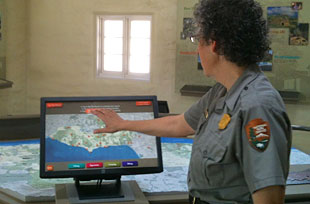
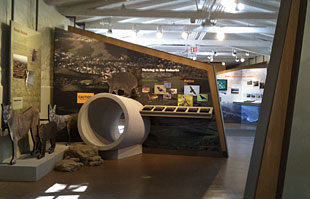
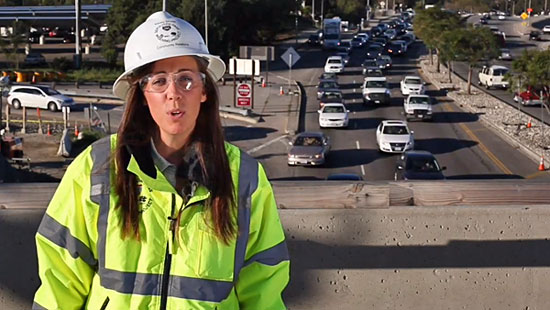
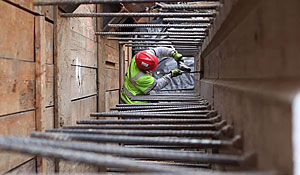

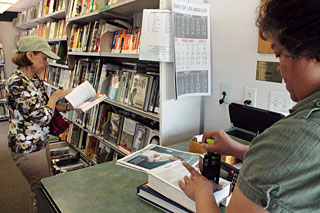
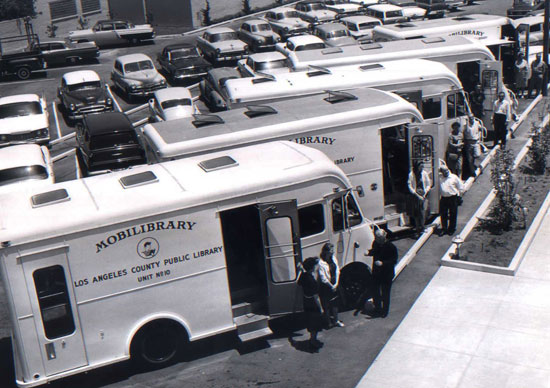
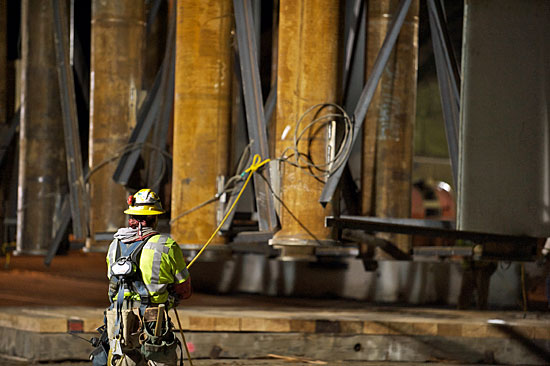

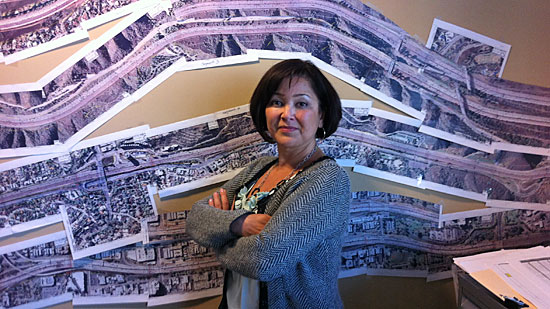
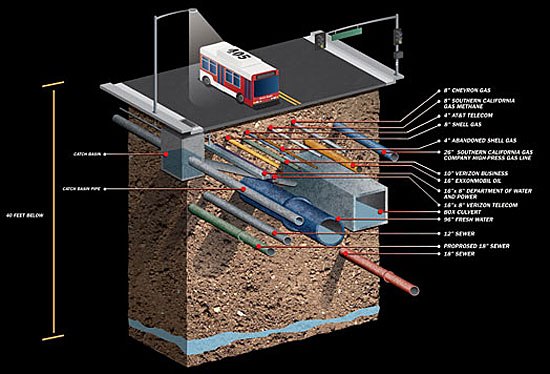
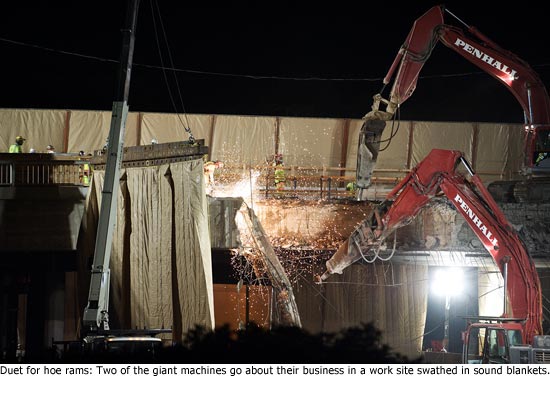







 405 bridge work causes a stink
405 bridge work causes a stink

